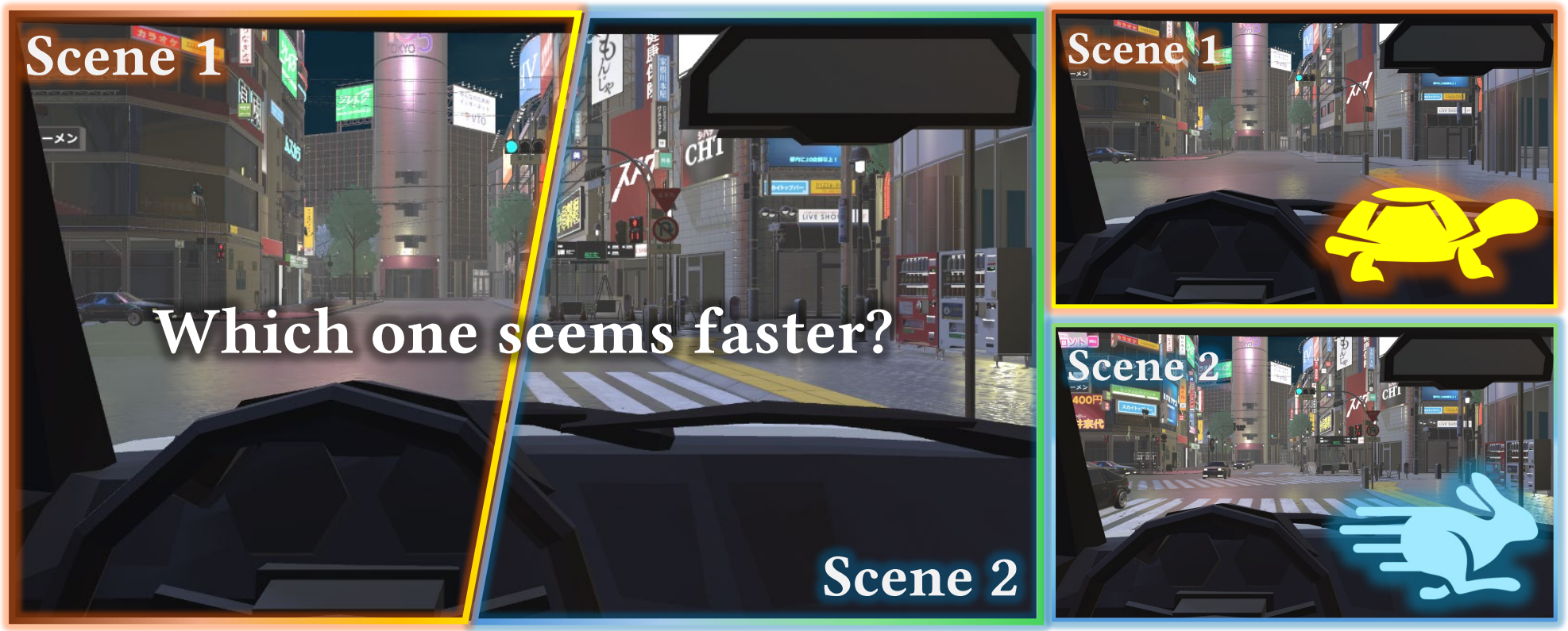Why Slow Feels Fast and Fast Feels Slow: Evaluating and Predicting Speed Misperception
Presented at IEEE International Symposium on Mixed and Augmented Reality (ISMAR) 2025
Abstract
Human perception of speed is largely driven by visual cues. However, our subjective estimations of speed are influenced by several factors that can lead to deceptive cues and speed misperception. While some prior studies have explored individual effects on speed perception, such as contrast, spatial frequency, and temporal frequency, their combined influence remains underexamined, particularly in immersive VR environments. In this work, we systematically investigate the influence and interplay of four visual factors—contrast, spatial frequency, temporal frequency, and eccentricity—on human perception of speed. To this end, we conduct a psychophysical study measuring subjective speed judgments across controlled stimuli and reveal significant perceptual biases induced by these factors. Based on our collected data, we learn a model to predict the underestimation or overestimation of perceived speed from visual scene properties. We apply and validate our findings in three immersive environments and demonstrate their influence on common VR scenarios. Finally, we discuss how understanding the factors that shape speed perception can drive the design of perceptually aligned virtual environments, with potential future applications such as correcting speed misperception and conceivably mitigating visual-vestibular conflicts by modulating perceived speed.
BibTeX Citation
@inproceedings{peng2025SpeedPerception,
title={Why Slow Feels Fast and Fast Feels Slow: Evaluating and Predicting Speed Misperception},
author={Xi Peng amd Colin Groth and Daniel Jimenez Navarro and Zihao Zou and Yan Zhu and Ana Serrano and Karol Myszkowski and Qi Sun and Praneeth Chakravarthula},
booktitle={IEEE International Symposium on Mixed and Augmented Reality (ISMAR)},
year={2025}
}
